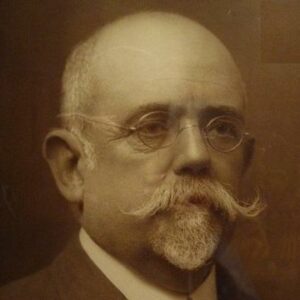In the late 1800s, Francisco Moreno was a well-known Argentine naturalist, adventurer, and geographer. He was one of Argentina’s earliest anthropologists, and the Argentine government chose him as an expert (perito) in the border conflict between Argentina and Chile. He was a proponent of colonization in the region and was instrumental in Argentina’s acquisition of significant swaths of Patagonia and subsequent development. He was born into a conventional noble family in Buenos Aires, where he began collecting antiquities and fossils as a child, and at the age of 14, he built a private museum to house his large collections. He was able to become a member of Argentina’s academic societies and political networks as a result of his family connections, which substantially aided him in his future career. A survey of Ro Negro Territory was the first of a series of scientific trips he embarked on. He went on several more journeys and spent several years in Europe during the next few years. During his trips to untamed lands, the daring young man endured numerous life-threatening ordeals, but nothing could stop him from continuing to explore. He grew more interested in politics and public education in his latter years, and he also founded the La Plata Museum of Natural History, South America’s most important museum of its sort.
Childhood and Adolescence
Francisco Pascasio Moreno was born in Buenos Aires to Francisco and Juana Thwaites Madero on May 31, 1852. His father was a founding member of the prominent Club del Progreso, as well as the secretary of the Buenos Aires Commerce Stock Market, director of the Buenos Aires Province Bank, and member of the Argentine parliament.
Francisco Moreno has been collecting antiquities and fossils since he was a child, and at the age of 14, he built a home museum to house his large collection. He attended local parochial schools and received his diploma in 1872.
He didn’t go to university and instead began working for his family’s insurance firms. He became involved in Argentina’s learned societies and political networks as a result of his family’s connections, and he helped to form the Argentine Scientific Society in 1872.
Later in life
In the 1870s, Francisco Moreno embarked on a series of expeditions. The first of these was a reconnaissance of Ro Negro Territory, which had hitherto been virtually unexplored. In 1876, he reached Lake Nahuel-Huapi in the southern Andes, after exploring the valleys of Patagonia and the Argentine Northwest.
During his trips, he collected natural history and archeological artifacts. He discovered Lake San Martn in February 1877 and explored various rivers in Patagonia. In March of that year, he discovered Mount Fitz Roy, which he called.
He returned to Argentina and presented his collections to the Province of Buenos Aires in order to create an archaeological and anthropological museum. The museum first opened its doors in August of 1878.
In 1880, he traveled to France and presented at a conference of the Paris Anthropology Society. He had discovered two prehistoric skulls in the Rio Negro area, and at the meeting, he explored their likely origins. He thought one skull was from the Quaternary period, while the other had ceremonial deformation markings, comparable to the Aymara people’s skulls from the Andes and Altiplano.
He started on his second major excursion to Patagonia shortly after returning to Argentina. He and his team were exploring Lake Nahuel when they were kidnapped by a Tehuelche native clan. He was sentenced to death, but only a day before his scheduled execution, he managed a daring escape.
Even Moreno’s near-death experience did not dampen his adventurous spirit, and in 1882-83 he explored the Andes from Bolivia southward, and in 1884-85 he made fresh investigations of the country south of the Ro Negro and of Patagonia.
He built the La Plata Museum of Natural History in 1888, which is now South America’s most important museum and one of the world’s most important museums. His huge collection of items, which are now displayed in the museum, is said to have contributed significantly to national mythology. Until 1906, Moreno served as the museum’s first director.
In the border battle with Chile, Moreno was designated Perito (a technical specialist or expert) in 1902. In this position, he refuted Chilean claims to the Southern Cone’s continental divide. From 1910 until 1913, he was the national deputy. He proposed various projects in this position, including the construction of railroads in Patagonia, the organization of a national scientific service (for topographic, hydrographic, geologic, and biological surveys), and the development of national parks.
In his latter years, he served as vice president of the National Council for Education, and in 1912, he founded the Argentine Boy Scouts Association, a Scouting and Guiding organization in Argentina. During World War I, he became interested in political developments and joined the conservative Argentine Patriotic League.
Major Projects of Francisco Moreno
Francisco Moreno founded the La Plata Museum, a natural history museum in La Plata, Argentina, in 1888, and it is considered one of the world’s most important of its sort. Every year, it attracts roughly 400,000 people, including a thousand visiting researchers.
Achievements & Awards
In 1877, Moreno was awarded an honorary doctorate by the University of Córdoba.
In 1907, he was awarded the Founder’s Medal of the Royal Geographical Society for his vast expeditions in the Patagonian Andes.
Personal History and Legacy
In 1885, he married Mara Ana Varela and started a family with her.
He died in Buenos Aires on November 22, 1919, at the age of 67.
Estimated Net Worth
Francisco Moreno is one of the wealthiest and most well-known explorers. Francisco Moreno’s net worth is estimated to be $1 million, according to Wikipedia, Forbes, and Business Insider.


